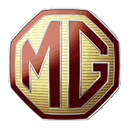Surface rust can be dealt with chemically.
The majority of the surface oxidation can be removed with wire brushes and scotch-brite disks. This is followed by application of either a de-rusting solution or a rust converter. The de-rusting solution will remove the oxides, leaving clean bare metal. It is best for areas with only mild corrosion, since it takes longer and is more labor-intensive, requiring steady scrubbing with a scotch-brite pad to keep the solution in place and not allow it to dry. The rust converter is used in heavily pitted areas or in places where it is not possible to scrub the rust away, such as in deep corners or welded areas. Generally these products contain phosphoric acid, which converts the red stuff we call rust into the black stuff we call black oxide. Think of the finish on industrial tools. These products generally contain other ingredients that make a coating suitable for priming. It at all possible, I prefer to remove rust entirely, rather than trust to converters. There is always the chance that rust in a deep crevice might not be completely converted, and this rust can sneak out at a later time.
Any corrosion that goes through a panel or comes from behind a panel needs to be cut out and the offending panels replaced. Nothing else for it. See the section on rust repair.
Right. Now we have a completely sanded car, with all of the corrosion either killed, converted or removed altogether and patches welded. I like to say that the grunt work is done. We can start on the bodywork.
